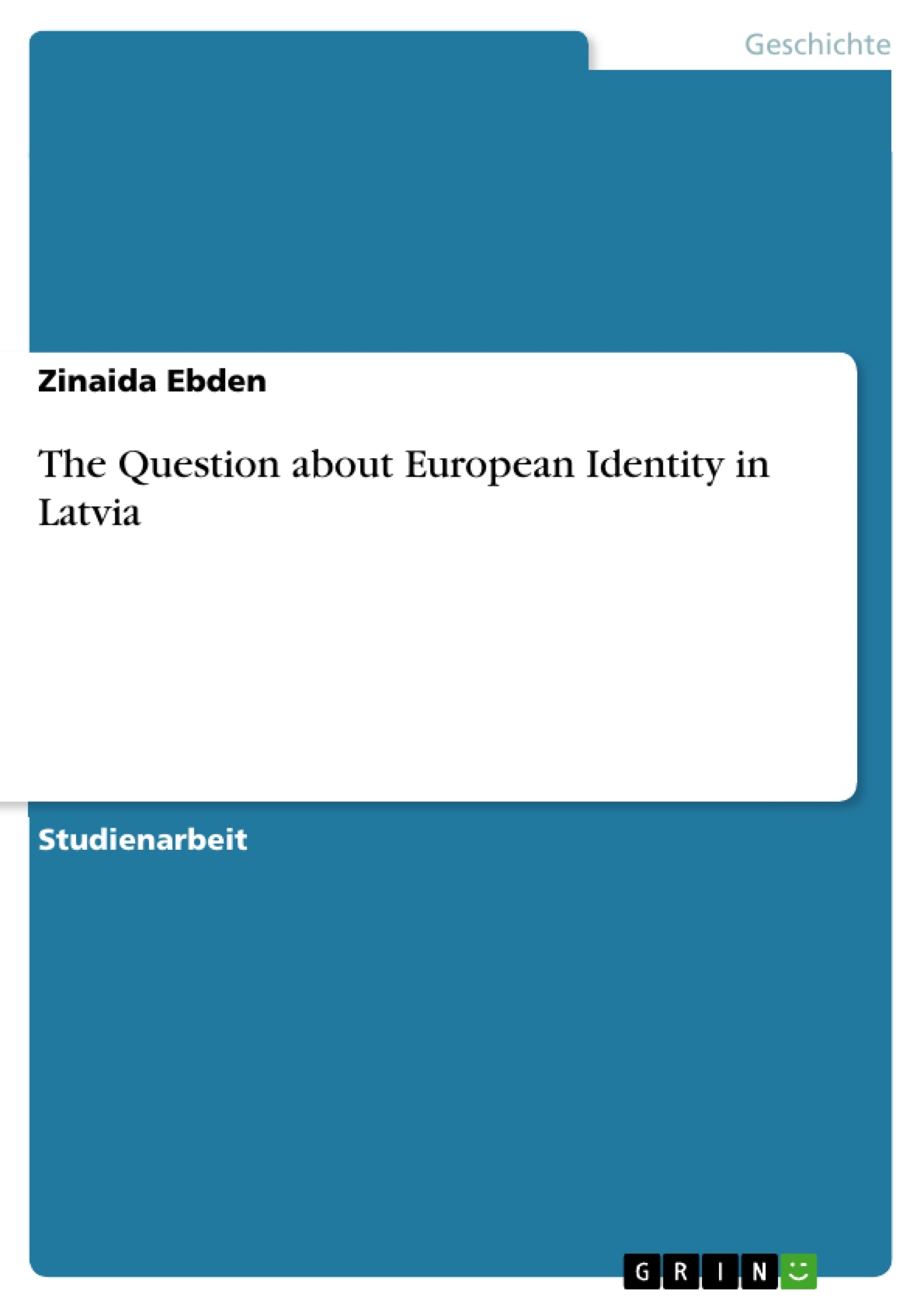The aim of this paper is to answer the question, of which cultural and political criteria the concept of European identity within the member states of the EU is made of.
By examining events of historical relevance, the author is going to investigate how national identity within Latvia has evolved and how this identity is linked to the idea of a European identity. Finally, the author is going to answer the question in what sense there is an understanding of and identification with the concept of European identity in Latvia today. For this purpose, the author will start with creating a theoretical basis for this paper by first examining the concept of identity from a cultural and sociological point of view. Then, the author will discuss the term of European identity by putting it into a political as well as societal context.
In addition, the author will describe how national identity in Latvia has manifested itself in the course of time, both before and after Latvia‘s final independence in 1991. By using the results previously found, the author will establish a relationship between national and European identity in Latvia to finally answer the question to which extent there is an identification with the concept of European identity within Latvia‘s population today. Lastly, this paper will be completed with a summarizing conclusion.
Inhaltsverzeichnis
- Introduction
- The Concept of Identity
- Individual Identity
- Social Identity
- Personal Identity
- Collective Identity
- Political Identity
- Individual Identity
- The Concept of European Identity
- The Declaration on European Identity from 1973
- The Six Pillars of Identity Policy of the EU
- European Identity in the Discourse of a European Public
- Identity Building in Latvia
- Latvian Identity until Latvia's Independence in 1991
- Processes of Identity Building in Latvia after 1991
- Conclusion
Zielsetzung und Themenschwerpunkte
Diese Arbeit untersucht die Entstehung und Entwicklung der europäischen Identität in Lettland. Sie befasst sich mit der Frage, wie sich die nationale Identität Lettlands im Laufe der Zeit entwickelt hat und inwieweit diese mit dem Konzept der europäischen Identität verbunden ist. Der Fokus liegt dabei auf den kulturellen und politischen Kriterien, die die europäische Identität innerhalb der EU-Mitgliedstaaten prägen.
- Das Konzept der Identität (individuell, kollektiv und politisch)
- Das Konzept der europäischen Identität und seine Entwicklung
- Die Herausbildung der lettischen Identität im historischen Kontext
- Die Verbindung zwischen nationaler und europäischer Identität in Lettland
- Das Verständnis und die Identifikation mit der europäischen Identität in Lettland heute
Zusammenfassung der Kapitel
- Kapitel 1: Introduction: Diese Einleitung stellt die Forschungsfrage und den Kontext der Arbeit vor. Sie erklärt den Fokus auf Lettland und die Motivation für die Analyse der lettischen Identität im Zusammenhang mit der europäischen Identität.
- Kapitel 2: The Concept of Identity: Dieses Kapitel beleuchtet das Konzept der Identität aus unterschiedlichen Perspektiven. Es werden die Definitionen von individueller, kollektiver und politischer Identität erörtert und wichtige theoretische Ansätze vorgestellt.
- Kapitel 3: The Concept of European Identity: In diesem Kapitel wird das Konzept der europäischen Identität aus politischer und gesellschaftlicher Sicht diskutiert. Es werden wichtige Meilensteine in der Entwicklung der europäischen Identität sowie verschiedene Ansätze zur Definition der europäischen Identität vorgestellt.
- Kapitel 4: Identity Building in Latvia: Dieses Kapitel untersucht die Entwicklung der lettischen Identität im historischen Kontext, sowohl vor als auch nach der Unabhängigkeit Lettlands im Jahr 1991. Es werden die wichtigsten Prozesse der Identitätsbildung in Lettland beleuchtet und die Herausforderungen und Chancen für die lettische Identität im 21. Jahrhundert diskutiert.
Schlüsselwörter
Europäische Identität, Lettische Identität, Nationalismus, Kultur, Geschichte, Politik, Identitätstheorie, Soziales, EU, Multikulturalismus, Integration.
- Arbeit zitieren
- Master of Arts Zinaida Ebden (Autor:in), 2016, The Question about European Identity in Latvia, München, GRIN Verlag, https://www.grin.com/document/376568



